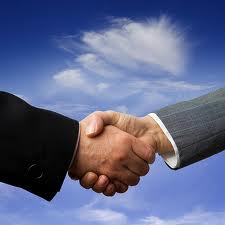Balance Sheet Business
(Hereinafter referred to Buch. Balance) reflects all assets, equity, debt owed to creditors, if any, per unit time. In this case 1a of time usually is the end of the quarter. Buch. Balance sheet: Assets = Debt + equity Buch. A balance must always be in equilibrium, so the assets and must be equal to the debt with equity. Buch. Balance is the overall picture of the state of affairs of the company.
In order to understand all the details necessary to consider the example of Buch. Balance. Balance sheet of a fictitious company, "comedian and K" December 12/31/2009 12/31/2010 Assets Current assets Cash 150 000 220 000 Accounts receivable ( Less 637 000 603 000 Write-offs of debt in the amount of 12,000 rubles in 2010) Inventories 1,202,500 1,555,000 Total assets 1,989,500 2,378,000 Property, equipment 1 110 000 980 000 Less: Depreciation 140 000 140 000 Total property and equipment 1,250,000 1,120,000 Other assets Intangible assets (patents, status, etc.) 45 000 40 000 Total assets 3,284,500 3,538,000 Liabilities and shareholders' equity Current liabilities 300 000 275 000 Credit debt 260 000 180 000 Taxes liquidate other liabilities 35 000 35 000 Total: Current Liabilities 595 000 490 000 Long-term liabilities Long-term debt 575 000 501 375 Total: liabilities 1 170 000 991 375 Shareholders' equity Share capital 30 000 30 000 Additional fees 250 000 250 000 Retained earnings last year 507 000 385 650 Total: shareholders' equity 787 000 665 650 Total: liabilities and shareholders' equity 1,957,000 1,657,025 Always remember: The sum of all assets must be equal to the sum of all liabilities and shareholders' equity only compare Buch. Balances for the two reporting periods can be seen on the company's financial position Watch annual changes in the accounts and you will be aware of what is going on the balance sheet for a reporting period is very important for the analysis of current liabilities shall be paid during the reporting Year
Pages
Archives
- December 2023
- November 2023
- October 2023
- June 2023
- April 2023
- December 2020
- November 2020
- September 2020
- August 2020
- July 2020
- June 2020
- May 2020
- April 2020
- March 2020
- February 2020
- January 2020
- December 2019
- November 2019
- October 2019
- September 2019
- August 2019
- July 2019
- June 2019
- May 2019
- April 2019
- March 2019
- February 2019
- January 2019
- December 2018
- November 2018
- October 2018
- September 2018
- August 2018
- July 2018
- May 2018
- April 2018
- March 2018
- February 2018
- January 2018
- December 2017
- November 2017
- October 2017
- September 2017
- August 2017
- July 2017
- June 2017
- May 2017
- April 2017
- February 2017
- January 2017
- December 2016
- November 2016
- October 2016
- September 2016
- August 2016
- July 2016
- June 2016
- May 2016
- April 2016
- March 2016
- January 2016
- November 2015
- August 2015
- July 2015
- November 2014
- June 2014
- May 2014
- April 2014
- March 2014
- February 2014
- January 2014
- December 2013
- November 2013
- October 2013
- September 2013
- August 2013
- July 2013
- June 2013
- May 2013
- April 2013
- March 2013
- February 2013
- January 2013
- December 2012
- November 2012
- October 2012
- September 2012
- August 2012
- July 2012
- June 2012
- April 2012
- March 2012
- February 2012
- January 2012
- December 2011
- November 2011
- October 2011
- September 2011
- July 2011
- June 2011
- May 2011
- April 2011
- August 2010

